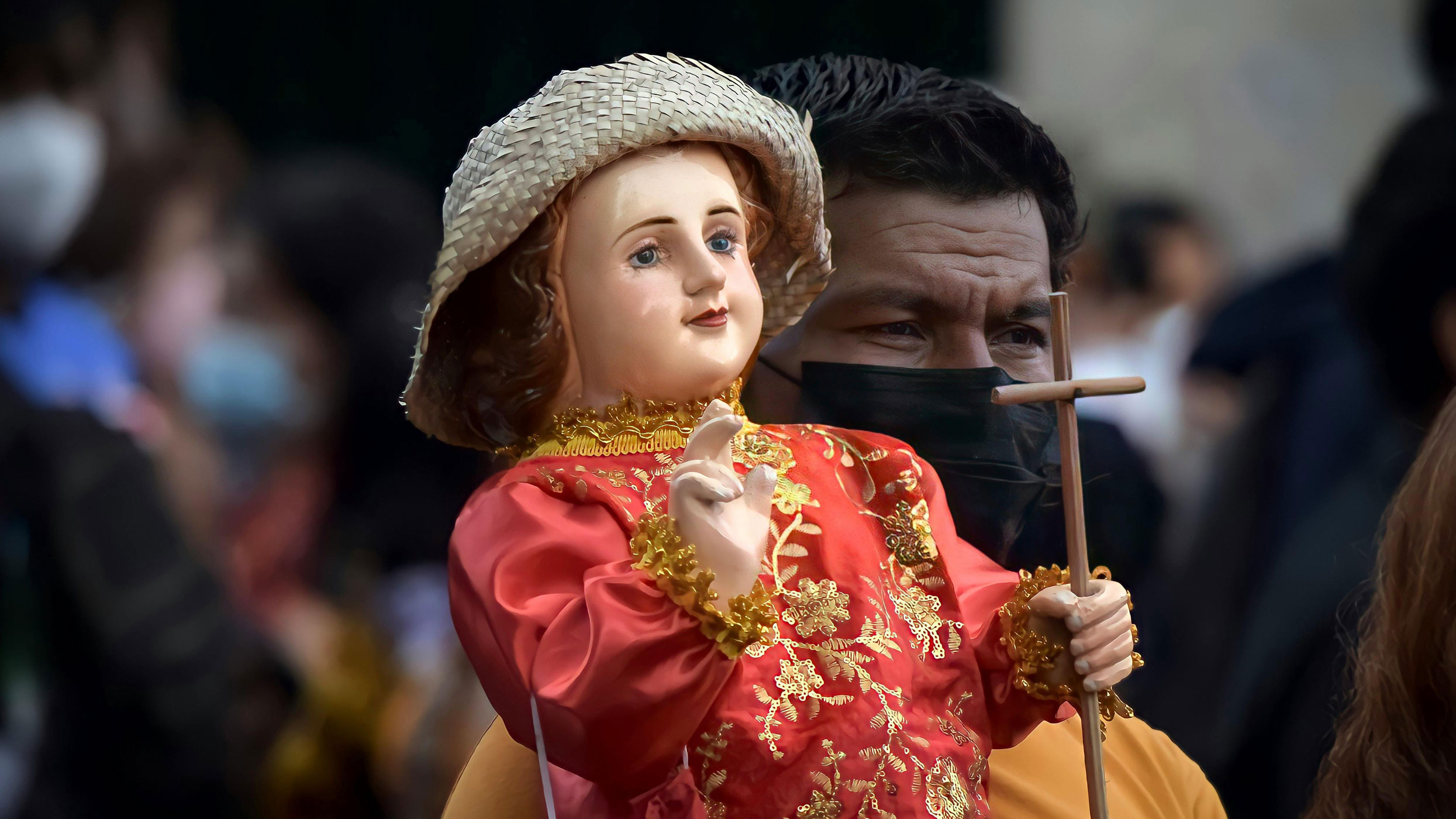Christ in Asia: Re-rooting the Message of Christ in Asian Soil

The Message of Christ and the Filipino Culture
Growing up in the Philippines, a predominantly Catholic country, I have always been fascinated with the use of the Santo Niño (Holy Child Jesus) in worship. The original statue was a gift from Portuguese explorer Ferdinand Magellan to a local chieftain named Rajah Humabon.1 Over time, the Santo Niño became a popular symbol of devotion for most native Filipinos who embraced their newfound faith.2
Arguably, the use of Santo Niño attempts to make Christ’s message more relatable to Filipinos. The statue is an effort to re-root the message of Christianity within an indigenous culture. Yet it raises some crucial questions: Is this a valid form of contextualization? Or is this outright idolatry masquerading as cultural accommodation? Can the message of Christ be faithfully understood in this manner? More importantly, how do we balance between presenting Christ’s message as relatable to the culture but also truthful to Scripture?
The Balance Between Rootedness and Responsiveness
For Asian theologian Ivor Poobalan, this balancing act involves two equal weights: rootedness and responsiveness. In his contributory piece for Asian Christian Theology: Evangelical Perspectives, Poobalan proposes Asian Christians can remain rooted in the person and work of Christ while also responding to the concerns of the church in Asia.3 The church in Asia must learn to communicate the life and works of Christ in a culturally appropriate way without deviating from biblical teaching.
Poobalan points out that Christianity’s expansion beyond its Jewish origins forced a creative adaptation from the very start. To connect with diverse cultures, Christians held firmly to their core beliefs about Christ while presenting them in ways that resonated with local languages and ideas. This interplay of faithfulness to Scripture and analysis of culture continues to shape Christian thought even today. Poobalan describes this dynamic interplay as the creative tension between rootedness and responsiveness.
A key example of this creative tension is when the early believers confronted false teachings. One of these is Docetism, a belief that Jesus only appeared to be human but in reality, was entirely and fully divine. Poobalan argues that the Apostle John countered this false notion. John used the Greek concept of “logos,” the divine word, who existed with God and was God (John 1:1). But then, John made a seemingly opposing statement: this same logos became flesh and dwelt among us (John 1:14).4
The Greek concept of “logos” is an idea about an impersonal reason that underlies nature. Since John wrote his Gospel to Greek-speaking Jews influenced by the arguments of Greek philosophy, he used this culturally loaded concept of the “logos” as a cultural parallel to Christ as the highest status possible before introducing him as also fully human. According to Poobalan, this is John’s creative way of highlighting Jesus’s dual nature: human and divine. John’s presentation is rooted in the revelation of Christ and responsive to the audience’s experience.
The Burden of the Gospel Writers
The debate about Jesus’s humanity and divinity extends to the time of the early church fathers. While it may have been formally settled at Chalcedon in AD 451, Christian leaders continued to wrestle with what it means to identify Jesus as both human and divine. However, some important things were sidelined in the creeds; as succinct statements about key ideas, they leave out some big ideas such as the “actual life of Jesus.”6
Poobalan wishes to recover the same burden of the gospel writers. He argues Asian Christians should focus on understanding Jesus through his actions and teachings. We should not just uncritically accept Western theological ideas. Many Asian Christians find these abstract concepts difficult to grasp and are looking for ways to connect with Jesus that are relevant to their own cultures. This is especially important because “Jesus was original to Asia.”7 While this approach is good, it does not come without some challenges.
One challenge in Asian theology is the tendency of some theologians to narrow Christ’s message and limit his impact on social and political concerns. In some contextual Christologies, Jesus is often portrayed as the liberator of the poor, oppressed, and marginalized people of the community. Jesus’s role as a liberator is certainly important, but it shouldn’t be the only focus of his teachings and actions. We should also remember Christ’s sacrifice in redeeming us from sin, his divine authority over all creation, and his promise to ultimately restore everything broken by sin. As Asian evangelicals, our role is to ensure that our pressing social and political concerns do not dictate how we frame the gospel message.8
Poobalan suggests that the way forward for Asian Christians is to move away from abstract Western theological ideas. Instead, they should focus on explaining the biblical story of Jesus in ways that connect with their cultures and address the pressing issues they face in their communities.9
The Way Forward for Asian Evangelicals
How can we present a biblical Jesus that is both rooted and responsive to the church in Asia? Here, we present two examples: Jesus as the Lord of all the powers and the Holy Trinity as a divine family.
For Western Christianity, Jesus as Savior addresses our feelings of guilt. However, in animistic cultures, people are often more concerned with the fear of demonic powers; thus, emphasizing Jesus as “Lord over all other powers” is more relevant. Jesus offers us protection and helps us overcome our anxieties (c.f. Mark 5:1-20; Eph 1:19-23).10 Yet the notion of Jesus as “Lord over all the powers” should not be taken as the only teaching about Christ. It must be incorporated into other important elements of Christ’s life and ministry. We must resist the tendency to reduce Christ’s message solely to overcoming evil spirits.
Another promising avenue for a rooted and responsive Christology in Asia is the idea of the “Holy Trinity as a divine family” (c.f. Mark 3:16-17; John 10:30). Unlike Western abstraction, this concept resonates with Asian cultures, where family is central. It offers a relatable way to understand Jesus as the Son of God, reflecting the importance of family bonds in Asian societies.11 While using human analogies to relate to the Holy Trinity is helpful, they have limitations. It is important to note that the Holy Spirit should not be portrayed as a mother figure in a way that implies a sexual union within the Godhead. We must be clear about what these analogies can and cannot teach about God’s nature.
The Way Forward for Filipino Evangelicals
Let us try to give an initial answer to the questions raised by the Santo Niño. Following the principles set out by Poobalan, a more valid way of re-rooting Christ’s message to the Filipino culture is to embrace a “full-orbed Christology.” Rather than portraying Christ using a man-made sculpture of a weak and innocent child, Filipino theologian Rodrigo D. Tano suggests a multifaceted approach:
A biblically based but culturally relevant Christology for the Philippines could be formulated with the use of these titles of Christ: Cristo Rey (Christ the King), especially for Easter Sunday; Cristong Matagumpay (Christus Victor); Cristong Makapangyarihang Tagapagligtas (Christ the Almighty Saviour); Cristong Buhay na Panginoon (Christ the Living Lord).12
Tano is right: focusing on the theological meaning behind these titles during sermons and Bible studies can be very helpful for Filipino Christians. These titles, taken together, paint a rich and well-rounded picture of Christ’s life and ministry. However, it’s important not to treat each theme in isolation. Think of them as parts of a bridge built across the seasons. Each title can be emphasized in different situations and contexts to highlight a specific aspect of Christ’s character and work, without ever losing the bigger picture.
- 1 “Feast Santo Niño: Becoming a Child of the Kingdom of God,” National Shrine of Our Mother of Perpetual Help (blog), January 16, 2021,
https://baclaranphenomenon.wordpress.com/2021/01/17/feast-of-santo-nino-becoming-a-child-of-the-kingdom-of-god/. - 2 The Santo Niño phenomenon is fascinating. It is a mixture of Christian beliefs with traditional Filipino animism. The Santo Niño statue has taken on a role similar to the “anito” (a deity figure) in Filipino culture. The traditional tribal dance originally performed to honor spirits, has been transformed into a worship dance for Jesus Christ as Santo Niño. See “How the Santo Niño Became the Philippines’ Most Popular Devotion,” accessed March 2, 2024,
https://aleteia.org/2023/01/22/how-the-santo-nino-became-the-philippines-most-popular-devotion/ - 3Ivor Poobalan, “Christology in Asia: Rooted and Responsive,” in Asian Christian Theology: Evangelical Perspectives, ed. Timoteo D. Gener and Stephen T. Pardue (Carlisle: Langham Global Library, 2019), 83-100.
- 4 Poobalan, 88.
- 5 Poobalan, 90.
- 6 Poobalan, 95.
- 7 Poobalan, 95.
- 8 Poobalan, 95.
- 9 Poobalan, 95.
- 10 Poobalan, 96.
- 11 Poobalan, 98.
- 12 Rodrigo D. Tano “Theological Issues in the Philippine Context.” Evangelical Review of Theology 19, no. 4 (October 1995): 35.

